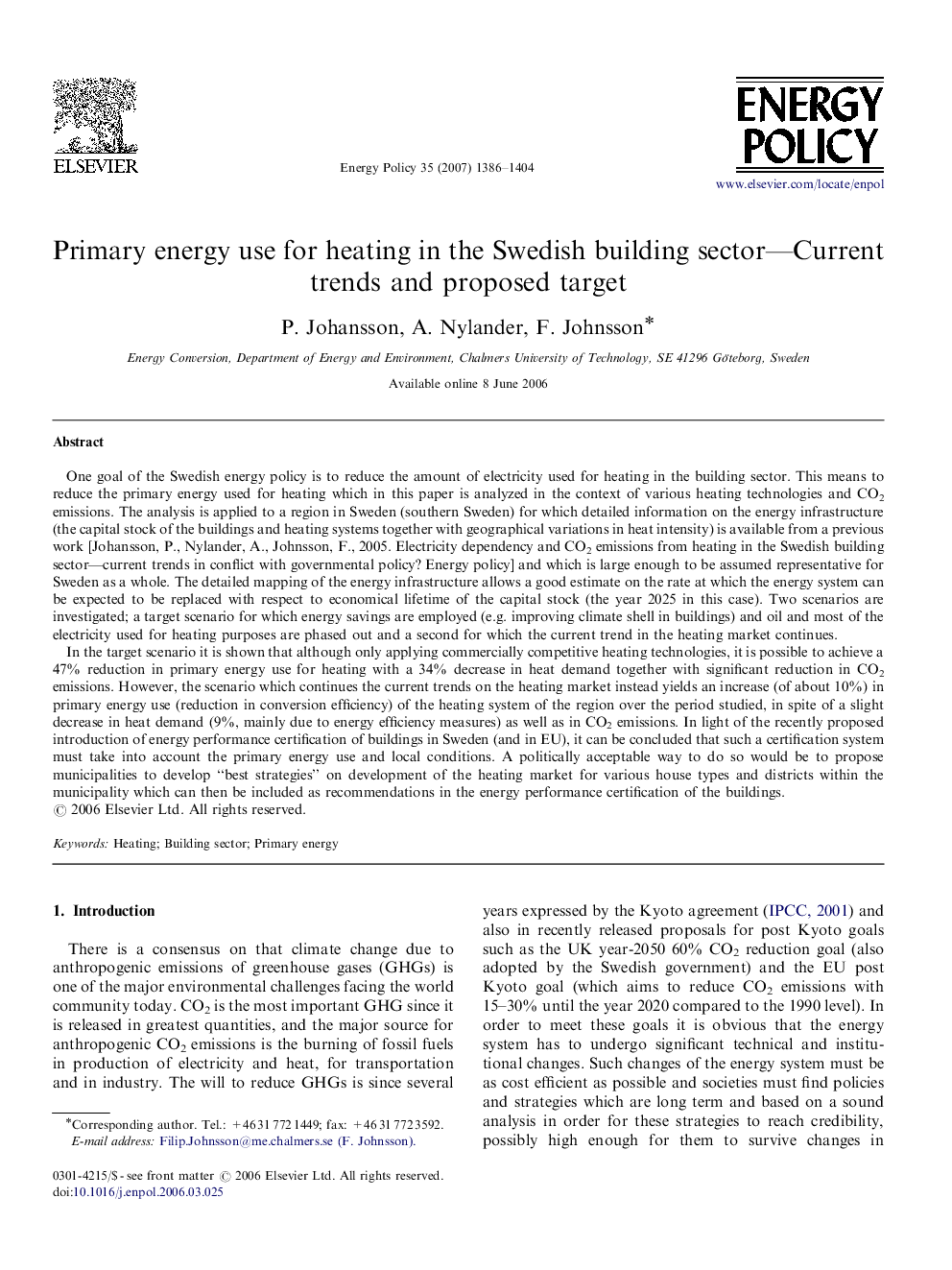| Article ID | Journal | Published Year | Pages | File Type |
|---|---|---|---|---|
| 996813 | Energy Policy | 2007 | 19 Pages |
Abstract
In the target scenario it is shown that although only applying commercially competitive heating technologies, it is possible to achieve a 47% reduction in primary energy use for heating with a 34% decrease in heat demand together with significant reduction in CO2 emissions. However, the scenario which continues the current trends on the heating market instead yields an increase (of about 10%) in primary energy use (reduction in conversion efficiency) of the heating system of the region over the period studied, in spite of a slight decrease in heat demand (9%, mainly due to energy efficiency measures) as well as in CO2 emissions. In light of the recently proposed introduction of energy performance certification of buildings in Sweden (and in EU), it can be concluded that such a certification system must take into account the primary energy use and local conditions. A politically acceptable way to do so would be to propose municipalities to develop “best strategies” on development of the heating market for various house types and districts within the municipality which can then be included as recommendations in the energy performance certification of the buildings.
Keywords
Related Topics
Physical Sciences and Engineering
Energy
Energy Engineering and Power Technology
Authors
P. Johansson, A. Nylander, F. Johnsson,
